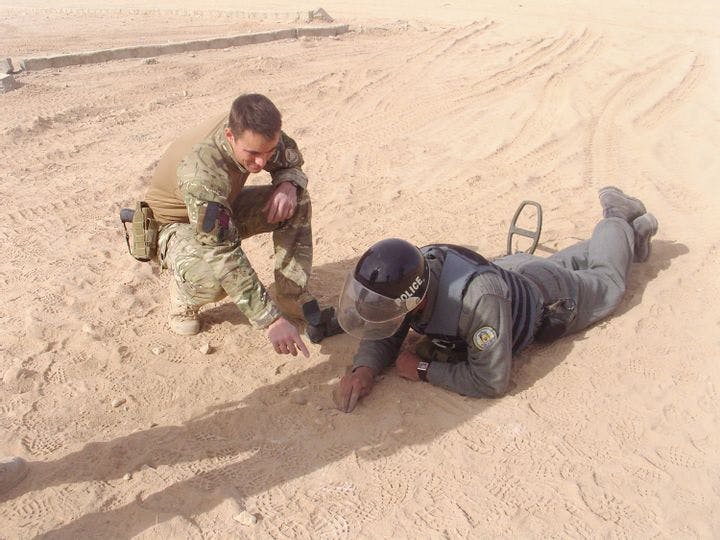Fall 2011
Calming the IED Storm
– The Wilson Quarterly
Having come to regard IEDs as a permanent threat in warfare, the Pentagon is no longer settling for stopgap measures.
A man punches a few buttons on his cell phone. Hundreds of yards away a hidden bomb detonates, unleashing a brain-rattling blast wave and propelling scorching bits of shrapnel in every direction. For U.S. troops in Iraq and Afghanistan, this scene has played out thousands of times, but Wired contributing editor Noah Shachtman reports it is becoming rarer. The United States has made big steps in defusing the threat posed by improvised explosive devices (IEDs).
It’s been a long and ugly journey. When the United States invaded Afghanistan in 2001, all that American troops had to protect themselves from IEDs were a few short-range radio frequency jammers. By late 2002, the Navy had developed a more sophisticated jammer called the Acorn, which blanketed a set of radio frequencies with competing signals, preventing an IED’s trigger signal from reaching its bomb. But bombers soon learned to switch frequencies.
The Army began to adapt a technology used to protect troops from artillery and mortar fire to thwart IEDs. This tool, the Warlock Green, was able to zero in on an IED’s triggering frequency and explode the bomb prematurely.
The Warlock Green was a welcome breakthrough, but before long militants found a way to defeat it. “Every time we put a countermeasure in the field—especially with the Warlock—they were able to outstrip it,” a defense executive told Shachtman. By May 2004, well into the Warlock Green era, some 2,000 American troops had been wounded by IEDs in Iraq alone. “IEDs are my number one threat in Iraq. I want a full-court press on IEDs,” the commander of U.S. forces in Afghanistan and Iraq, General John Abizaid, declared.
The defense industry obeyed. But each countermeasure had its flaws, and with all the devices in the field, some even jammed others. As of May 2005, IEDs had caused more than 7,700 American casualties. By the end of 2006, that number had roughly doubled.
The military pressed on. The Joint IED Defeat Commission was given a budget of $3.6 billion. Then the Warlock Duke—a successor to the Warlock Green that was able to detect and jam IED signals with unprecedented specificity—was brought to the field, soon to be followed by numerous countermeasures of equal or greater sophistication. By the summer of 2007, Shachtman reports, “IEDs had become relics in broad swaths of” Iraq.
But what worked in Iraq hasn’t worked in Afghanistan. “No-tech” bombs of wood and fertilizer that explode when stepped on or driven over remain the weapon of choice there. The number of IEDs is growing, though it is still smaller than what U.S. troops faced at the height of IED use in Iraq. Shachtman notes that 378 U.S. troops were injured by IEDs in Afghanistan in July 2010—a number “about 15 times higher than the casualty count from two years before.” Anti-IED efforts there involve enhanced surveillance and intelligence.
Having come to regard IEDs as a permanent threat in warfare, the Pentagon is no longer settling for stopgap measures. The so-called JCREW, now under development, is a highly advanced, networked jammer that will be used not just against IEDs but drones, satellite signals, and other high-tech threats. Field tests began in July.
THE SOURCE: “The Secret History of Iraq’s Invisible War” by Noah Shachtman, at Wired.com, June 14, 2011.
Photo courtesy of ISAF
